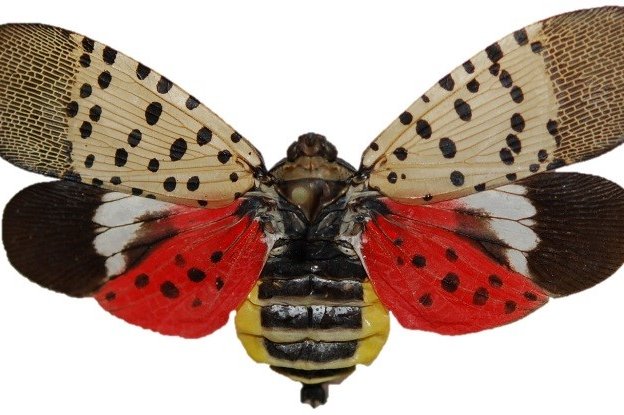
May 10, 2019
 Photo courtesy/Pennsylvania Dept. of Agriculture
Photo courtesy/Pennsylvania Dept. of Agriculture
Since 2014, the spotted lanternfly has spread across 14 counties in Pennsylvania and could cost Pennsylvania's fruit and tree industries more than $18 billion. New research using fungi to attack the pests has scientists 'cautiously optimistic.'
The spotted lanternfly – an invasive insect that feeds on fruit and wood trees and threatens numerous agricultural industries – has made its first appearance in Burlington County, New Jersey.
Appearances of the insects at Palmyra Cove Nature Park, as well as nearby properties, were confirmed this month by Palmyra Borough Administrator John Gural, according to the Burlington County Times.
The insect made its first appearance in the United States in 2014, in Pennsylvania, and has been a nuisance in eastern and central portions of the Keystone State since its arrival from its native Asia.
Here’s a look at a particularly concentrated invasion in Pennsylvania last summer:
That’s not ideal.
As recently as last July, field surveys conducted by crews from the U.S. Department of Agriculture found no sign of the insects in Burlington County, but the insects were noticed in Warren, Hunterdon, and Mercer counties further north
The first reported appearance of a spotted lanternfly in the Palmyra Cove Nature Park was last November, according to the Times. An effort to clear out Ailanthus trees — known as the “Tree of Heaven”, and a preferred habitat of the insect — from beneath the Tacony-Palmyra Bridge is already underway, according to the Times.
The U.S. Department of Agriculture currently is also working on hiring more than a dozen crews to search New Jersey from top to bottom for lanternflies, the Times reports. Earlier this year, Pennsylvania’s Department of Agriculture and Penn State announced a joint effort dedicating more than 150 researchers to figuring out how to eradicate the insect.
One answer might be close by: Just this month, Cornell University published research centered around fungi found in Reading that have been found to kill spotted lanternflies.
Follow Adam & PhillyVoice on Twitter: @adamwhermann | @thePhillyVoice
Like us on Facebook: PhillyVoice
Add Adam's RSS feed to your feed reader
Have a news tip? Let us know.